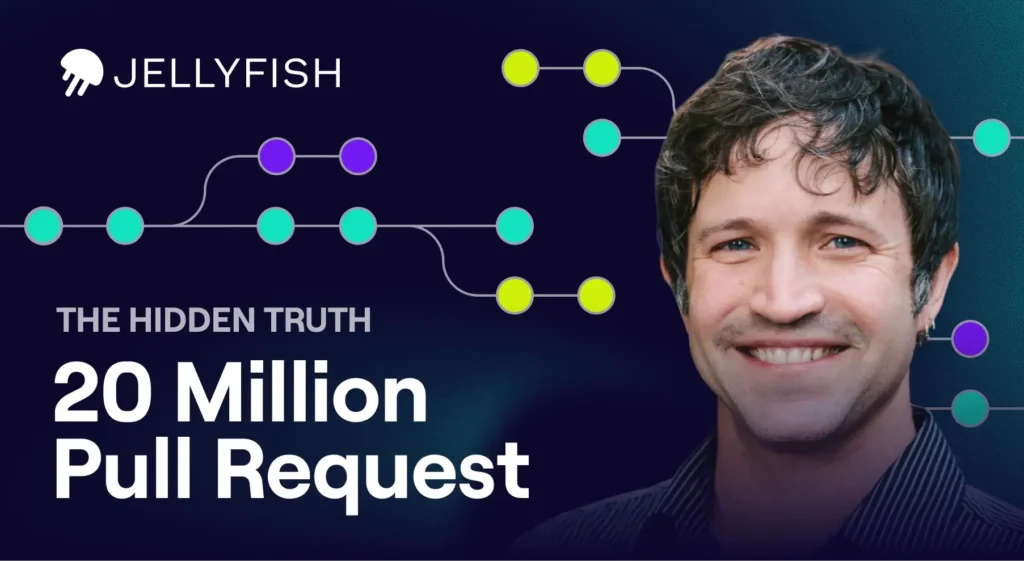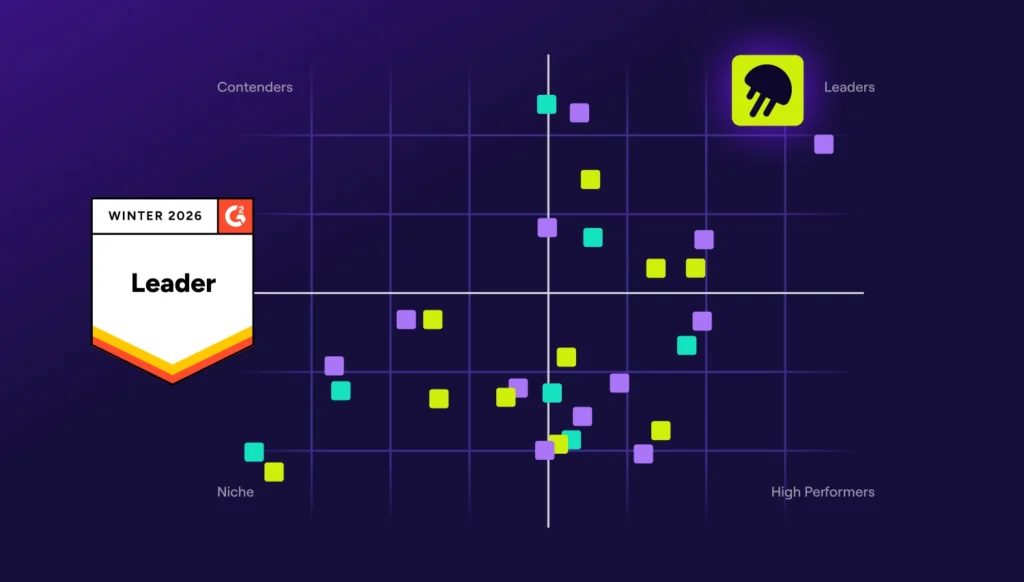Following an acquisition, this Jellyfish customer saw huge growth in its engineering organization. What was once a team of 300–400 doubled twice within a four-year period and now stands at 1,500 engineers.
This team recognized the need for metrics and data in order to keep track of its fast-growing engineering teams. The company brought on a director of technical program management (TPM), and established a team of internal consultants to serve the entire engineering organization. “We had teams joining every single week, sometimes multiple teams joining every week,” he said. “We were having to do more and more reports by hand. People were aware that they needed the metrics, but we didn’t have a good solution yet. That’s where Jellyfish came in.”
Because of the size of their engineering organization, they chose to first roll out Jellyfish to the company’s engineering managers. They recognized that they would need buy-in at both the manager and executive levels; from there, they could roll out Jellyfish to the rest of the organization.
Starting from scratch with engineering metrics
The team needed to start from the beginning when it came to engineering metrics. “When I joined, the CEO said to me, ‘if you can give me one number, that will be one number more than I’ve got today’,” the director said. Their first order of business was to clean up the company’s Jira instance, then to use Jellyfish to establish an accurate allocation model by connecting GitHub and Jira.
The team conducted education sessions with the company’s engineering managers, working to roll out Jellyfish in one fell swoop across the entire organization. Over the course of a year, Jellyfish became part of their engineering DNA. “Previously, I think I’d used the word ‘jellyfish’ maybe seven times in my life, but now it’s become very natural for people to just talk about Jellyfish and their Jellyfish numbers,” he said.
By providing engineering managers with accurate metrics, the organization could begin identifying opportunities for improvement. This required guidance from the team: rather than individual, granular metrics, they encouraged managers to focus on setting aside time to improve and using Jellyfish as a tool to drive the improvement. That focus on continuous improvement ensured that managers weren’t using Jellyfish as a tool to micromanage their engineers.
VPs and C-level executives at the company also started following along with Jellyfish data — particularly allocations and sprint metrics. “At the executive level, they’re very interested in whether we’re focusing on the right stuff at a macro level,” said the director. “Are we actually focusing on our big bets, or is a lot of energy going into other places?”
The company established a culture of accountability around their metrics, reviewing engineering metrics at the VP level alongside business metrics in a monthly business review. By including Jellyfish data, the company knew it was getting the whole story in terms of the business’ growth and productivity.
Expanded use: DevFinOps and Copilot Impact
While they initially rolled out Jellyfish to its engineering managers, the tool quickly became popular in other areas of the business. In particular, their finance organization embraced Jellyfish’s DevFinOps for software capitalization.
Before Jellyfish, program managers surveyed their engineering teams each month to record how much work was being spent on new feature development, support work, and keeping the lights on. Jellyfish provided them with a new source of truth tied directly to GitHub data and Jira tickets — a fully auditable, accurate trail of information. “It saves days of effort for myself and the finance group every month,” said the director. “It’s a lot more accurate, and it’s a lot more defensible and auditable.”
DevFinOps made an impact beyond just the engineering organization: their parent company standardized it across the entire business. “Jellyfish basically set the standard of financial reporting that we wanted. The finance group is now getting the same type of reporting from every single part of the organization,” said the director. Jellyfish is now an integral part of their regulations, compliance and reporting.
More recently, the company began using Jellyfish’s Copilot Impact to track the company’s use of AI coding tools. Their priority is measuring adoption — confirming whether or not the company’s investment is even being used by the engineering organization — but they hope to pivot soon to measuring increases in productivity. “Visibility into adoption is our number one use case, but after adoption, we’re going to want to know how this is helping with our efficiency,” the director said.
Director of Technical Program ManagementVisibility into adoption is our number one Jellyfish use case, but after adoption, we’re going to want to know how this is helping with our efficiency
Moving forward with DevEx
The team’s adoption of Jellyfish is only beginning. The company recently trialed DevEx in order to place productivity gains in the context of developer sentiment. “There’s no point in going really fast if you’re burning out your team and you’re not getting better,” said the director. They began using DevEx in a small trial, then increased to a larger group before finally rolling it out across the entire development team.
Feedback has been very positive. Rather than conducting exhaustive surveys on a quarterly basis, they send out a short, 10-question survey each month that takes about two minutes to fill out. That approach is already paying dividends: “It’s already giving us big, interesting information on areas we need to focus on,” said the director.




